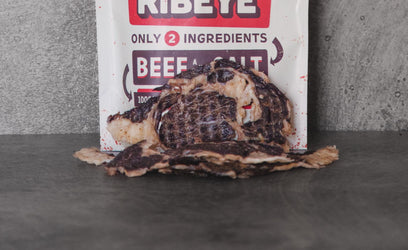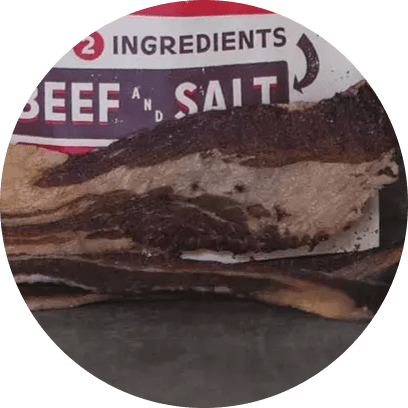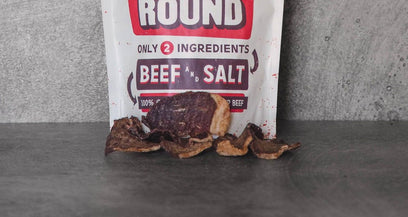THE CARNIVORE DIET BENEFITS




If you’ve done research into what regenerative agriculture is all about, you’ve probably discovered that this approach to farming helps sequester carbon. What exactly does this mean? Why is it important? And, exactly how does regenerative agriculture sequester carbon?
These are just a few of the questions you’ve got on your mind - and we’ll answer them in great detail below while covering many other important elements of regenerative farming. You’ll even learn the easiest ways to support regenerative ag yourself by the end of this discussion. We’ve got a lot to cover, so let’s not waste any more time. We’ll kick things off with a brief introduction to regenerative agriculture.
A Brief Introduction to Regenerative Agriculture
In order for you to fully understand how regenerative agriculture sequesters carbon, you first need to know what exactly this farming style is. And, we’ve actually got a complete guide on the topic just for you. But really, all you need to know right now is that this is a method of farming that aims to build healthy soil, increase biodiversity, and improve ecosystem services.
This is done through a number of techniques - like cover cropping, soil tilling, natural grazing, and a whole lot more. The specific tactics that go into regenerative framing is a conversation for another day. Just know that one of the key outcomes of a regenerative farm is the sequestration of carbon - but what does that mean exactly?
What is “Carbon Sequestering” in Agriculture?
Maybe you already have some knowledge of what carbon sequestration is. But this is quite a convoluted topic, and we want to take the time to break it down in simple terms before going any further.
Essentially, carbon sequestration is the process of capturing and storing atmospheric carbon dioxide (CO2) in a manner that reduces the concentration of atmospheric CO2. The goal is to have less CO2 gasses floating around our atmosphere as these greenhouse gases are partially to blame for the downfall of our lands.
So, where does carbon get sequestered if not in the atmosphere? In regenerative agriculture, it can be sequestered in the soil. How does that occur, though? And is this necessarily better than letting those gases roam free? We’ll talk more about that later on - along with other methods in which this outcome can be achieved. Before we do that, though, we want to discuss why this is so important in the first place.
Why is it Important to Sequester Carbon in Agriculture?
The importance of carbon sequestration in agriculture cannot be overstated. In fact, this is one of the most pressing global issues of our time and it's becoming increasingly clear that we need to take action now to mitigate the impact of excess atmospheric carbon dioxide. And because agriculture is one of the largest contributors to greenhouse gas emissions (nearly 24% of global emissions) it makes sense to start there.
By sequestering carbon in the soil, we can not only reduce the amount of atmospheric CO2 but also create a more resilient and productive agricultural system. One where not just the consumers benefit - but so do the lands we farm and the farmers themselves. Everyone wins.
And the fact of the matter is that carbon sequestration is only part of the reason this goal is worth striving for. These techniques can improve soil health and fertility, leading to better crop yields and more nutritious food. It can also increase water retention in the soil, reducing the risk of drought and improving the ability of farmers to adapt to changing weather patterns.
Moreover, by reducing the amount of atmospheric CO2, we are also improving public health by reducing the impacts of air pollution and extreme weather events. This is especially important for communities that are already disproportionately affected by the impacts of greenhouse gases, including low-income communities and communities of color.
The problem is, carbon sequestration has been an untapped resource in the battle to restore our lands. At least, until now. More and more farms, organizations, and even individuals are recognizing the impact regenerative agriculture can have in sequestering carbon. How does it work, though?
How Does Regenerative Agriculture Sequester Carbon?
So, how does regenerative agriculture sequester carbon? What specific techniques are used to accomplish this? There are a few ways, as a matter of fact:
- Cover cropping: Cover cropping involves planting crops that protect and improve the soil between main crops. This can include planting legumes, which fix nitrogen in the soil, or other crops that add organic matter to the soil and reduce erosion.
- Reduced tillage: Reduced tillage practices minimize soil disturbance and help maintain a healthy soil structure. This helps preserve soil carbon and organic matter, allowing plants to absorb more atmospheric CO2 and store it in the soil.
- Rotational grazing: Rotational grazing involves moving livestock from one pasture to another, giving each pasture time to recover. This helps promote the growth of diverse plant species, which in turn helps absorb and store atmospheric CO2 in the soil.
- Composting: Composting is the process of breaking down organic matter to produce a nutrient-rich soil amendment. By adding compost to the soil, farmers can improve soil structure and fertility, promoting the growth of diverse plant species and helping absorb and store atmospheric CO2 in the soil.
In addition to these practices, regenerative agriculture also promotes the use of compost tea and other soil amendments, which help promote soil health and increase the diversity of soil microorganisms.
Really, it all can be summarized as this: by fostering a diverse and thriving ecosystem in the soil, plants are able to absorb more atmospheric CO2 and store it in the soil, where it can remain for decades or even centuries.
Just how much carbon is sequestered through these tactics, though? There’s no way to know for sure - as it varies based on soil type, climate, and the specific practices used. With that said, the figure is significant enough to justify the adoption of regenerative agriculture worldwide.
How Can You Support This Practice?
Now that you know how regenerative agriculture sequesters carbon - and all the other benefits of this tactic - you probably want to know how you can support this practice yourself. And, fortunately for you, we have a full guide on how to support regenerative agriculture. Check it out - or read below for a few ideas to start you off on the right foot:
- Buy products from regenerative farmers: Look for products labeled as being produced using regenerative agriculture practices, and buy them whenever possible. This helps support farmers who are using regenerative agriculture practices and encourages others to do the same. If you can’t find farms to support directly, look for brands that support these farms - offering secondary support.
- Invest in regenerative agriculture projects: Consider investing in regenerative agriculture projects through organizations like The Land Institute, or support regenerative agriculture initiatives through crowdfunding platforms. Consider supporting organizations like Regeneration International, which works to promote regenerative agriculture and educate people about the benefits of these practices. Just do your research into what you’re supporting and make sure your dollars are being used wisely.
- Advocate for regenerative agriculture policies: Contact your elected officials and advocate for policies that support regenerative agriculture, such as tax incentives for farmers who use regenerative practices, and funding for research and development in this field. Make your voice heard!
- Spread the word about regenerative agriculture: Share information about regenerative agriculture with your friends and family, and educate others about the benefits of these practices. Explain the implications of a world reliant on regenerative farms: better foods, healthier ecosystems, and more diversity!
- Start a regenerative agriculture project: If you have access to land, consider starting a small regenerative agriculture project. This could involve planting a garden using regenerative techniques or working with a local farmer to implement regenerative practices on a larger scale. It doesn’t matter how big or small it is - as long as you’re doing something.
By taking these actions, you can help support regenerative agriculture and contribute to a more sustainable and resilient food system. The best way to create impactful change yourself is through your support of companies that employ regenerative agriculture practices. And that’s exactly what we do here at Carnivore Snax with our meat chips.
These are the best low carb snack - and one of the easiest ways to eat a high-protein diet is by adding them to your life. With just two ingredients - meat and salt - they’ve got everything you need and nothing you don’t. And just wait till you get that first bite - these are referred to as “meat pastries” as they melt in your mouth, giving way to tantalizing flavors you’re sure to love.
The best part? Our meat is sourced exclusively from regenerative farms, so you can rest assured you’re doing your part to help sequester carbon and restore our lands here in the United States.
Parting Thoughts on How Regenerative Agriculture Sequesters Carbon
Hopefully, this in-depth resource answered your question - how does regenerative agriculture sequester carbon? It's time for us to take action and invest in regenerative agriculture as a means of mitigating the impacts of excess atmospheric carbon. By sequestering carbon in the soil, we can create a more resilient and productive agricultural system while also reducing atmospheric CO2 and improving public health.
Let's work together to build a more sustainable and equitable future for all. Start by getting your carnivore chips today - choose from ribeye chips, steak chips, lamb chips, beef chips, brisket chips, chicken chips, and pork chips. There’s something for every meat lover at Carnivore Snax!

























